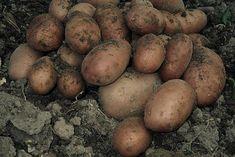
Trials have been ongoing on sites, both conventional and organic, around the UK for a few years, to uncover varieties with late blight resistance and T&M has full and exclusive horticultural sales rights to the groundbreaking programme.
Sarpo Mira was the first to appear from the stable amid a fanfare launch at potato events in the UK during the winter of 2003 and spring 2004.
Sarpo Mira obtained a full nine-out-of-nine for Blight resistance in NIAB trials. Sarpo Axona quickly followed after completing its National Listing in the autumn of 2004. Both varieties have been promoted extensively throughout 2005 and several small-scale growers, focused on farmgate sales, are growing them for the first time this year.
Both are late maincrop types, producing large red-skinned tubers, very floury and full of flavour. They are vigorous in growth and produce very long haulms. Their adaptability to most soil types and weed-suppressing foliage, and most importantly their blight resistance, significantly reduces, or in some cases excludes, the need for chemical herbicide and fungicide control.
Both are therefore ideal for the organic grower, and organically certified seed of both should be available for the 2006 planting-season.
As well as these attributes both Sarpo Mira and Axona have shown themselves to be unfazed by slugs, wireworm and viruses.
So how do these ‘superspuds’ perform when cooked and what do they taste like? Both have a high dry-matter content and are highly suitable for mashing, baking, roasting and chipping, says T&M. As is the case generally with potatoes, taste and cooking characteristics can depend on weather conditions, soil type and harvest time. Haulms can be cut down a couple of weeks prior to lifting from mid-September to set skin, which helps protect the tubers during and after lifting.
The trials do not end here, however, T&M awaits further progress. Retaining durable resistance to late blight and viruses remains a focus. But additional focus on future selections from the breeding programme will be on finding varieties that mature earlier, with better shape and appearance, are suitable for a wider range of consumer uses, show good resistance to potato cyst nematodes, and a more accurate identity of the genes conferring resistance.